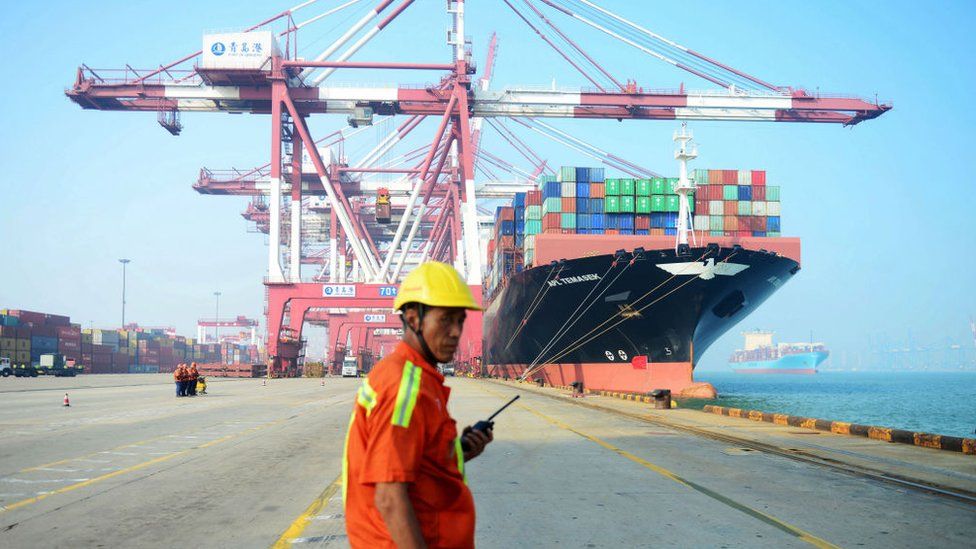What is the Regional Comprehensive Economic Partnership (RCEP)?
- Published

Asian leaders have signed a mammoth trade deal that has been nearly a decade in the making.
It includes the 10 members of the Association of Southeast Asian Nations (Asean), plus China, Japan, South Korea, Australia and New Zealand.
The members make up nearly a third of the world's population and account for 29% of global gross domestic product.
The new free trade zone will be bigger than both the US-Mexico-Canada Agreement and the European Union.
India was also part of the negotiations, but pulled out last year, over concerns that lower tariffs could hurt local producers.
The Regional Comprehensive Economic Partnership (RCEP) was signed on the side lines of the mostly-online Asean conference this weekend.
What does it do?
RCEP is expected to eliminate a range of tariffs on imports within 20 years.
It also includes provisions on intellectual property, telecommunications, financial services, e-commerce and professional services.
But it's possible the new "rules of origin" - which officially define where a product comes from - will have the biggest impact.
Already many member states have free trade agreements (FTA) with each other, but there are limitations.
"The existing FTAs can be very complicated to use compared to RCEP," said Deborah Elms, from the Asian Trade Centre.
Businesses with global supply chains might face tariffs even within an FTA because their products contain components that are made elsewhere.
Australia and China are big trading partners but have disagreed on a number of important political issues
A product made in Indonesia that contains Australian parts, for example, might face tariffs elsewhere in the Asean free trade zone.
Under RCEP, parts from any member nation would be treated equally, which might give companies in RCEP countries an incentive to look within the trade region for suppliers.
'Low ambition'
Although the RCEP was an Asean initiative, it is regarded by many as a China-backed alternative to the Trans-Pacific Partnership (TPP), a proposed deal that excluded China but included many Asian countries.
Twelve member states signed the TPP in 2016 before the the US President Donald Trump withdrew the US in 2017.
The remaining members went on to form the Comprehensive and Progressive Agreement for Trans-Pacific Partnership (CPTPP).
Although it includes fewer countries, the CPTPP cut tariffs further and included provisions on labour and the environment than the RCEP.
Speaking at an online event at the Peterson Institute of International Affairs, Australia's former Prime Minister Malcolm Turnbull said the new deal was old-fashioned.
"There'll be some hoopla about the signing and the entry into force of RCEP. I mean RCEP is a really low ambition trade deal. We shouldn't kid ourselves," said Mr Turnbull, who signed Australia up to the TPP.
Co-operation and loathing
RCEP brings together countries that have often had prickly diplomatic relationships - notably China and Japan.
Both Australia and China will also sign onto the deal, despite reports that China might boycott some Australian imports over a variety of political differences.
"You can both co-operate with someone and just loathe them, even as a human being. RCEP has done an impressive job of separating itself from other things," said Ms Elms.
International trade was far lower on the agenda in this year's US election, and incoming president Joe Biden has said relatively little about whether his trade policy will change significantly or if he will reconsider entry into the TPP.
- Published9 November 2020
- Published5 November 2020